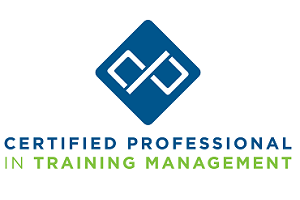Webinars have gained significant popularity in the training industry as a powerful tool for delivering educational content and fostering professional development. With the advancements in technology and the increasing demand for flexible and accessible learning experiences, webinars have emerged as an effective solution. As organizations and individuals seek innovative ways to enhance their training programs, webinars have become a go-to choice, enhancing the way knowledge is shared, skills are developed and connections are made.
Let’s explore five benefits of incorporating webinars in training programs.
1. Convenience
Webinars offer a convenient way for people to attend informational sessions without the need to travel or be physically present in a specific location. Participants can join from anywhere with an internet connection, which eliminates geographical barriers. Moreover, webinars make knowledge and expertise accessible to a wider audience, including those who may not have the opportunity to attend in-person events or conferences.
Additionally, webinars can be scheduled and conducted within a specific time frame, allowing participants to optimize their schedules. Furthermore, recordings of webinars are often available for later viewing, enabling participants to revisit the content at their convenience. This element also has positive impacts on the cost associated with webinars.
2. Cost-Effectiveness
Webinars are cost-effective for several reasons. Firstly, they eliminate the need for physical event expenses associated with traditional in-person seminars or conferences, such as venue rentals, arranging logistics, catering and travel costs for speakers and attendees. Webinars only require a stable internet connection and a webinar platform, significantly reducing costs.
Secondly, webinars reduce the amount of manpower that is associated with these types of learning experiences. They eliminate the need for organizing and coordinating logistical aspects, such as setting up a physical space, arranging seating, or managing audiovisual equipment. With webinars, organizers can focus on content creation, marketing and delivering high-quality presentations, saving time and resources that can be allocated elsewhere.
Lastly, as previously stated, webinars can be recorded and repurposed for future use. By recording a webinar, organizations can create on-demand content that can be accessed and viewed by individuals who were unable to attend the live session. This extends the life span and value of the webinar content, allowing organizations to generate ongoing benefits without incurring additional costs for content creation.
3. Scalability
Webinars offer significant benefits in terms of scalability, enabling organizations to reach a larger audience and broaden their impact. They have the capacity to accommodate a large number of participants simultaneously. Unlike physical events with limited seating capacities, webinars can handle thousands of attendees from various locations around the world. This scalability enables organizations to reach a wider audience, maximizing their reach and impact without the constraints of physical space.
With webinars, geographical boundaries become irrelevant. Participants can join from any location with an internet connection, making it easier to engage with individuals from around the world. This global reach allows organizations to connect with a diverse range of individuals, tap into new markets or target specific demographics that may not have been accessible through traditional in-person events.
4. Interactive Elements
Many webinars offer interactive features, such as live chat, polls and question and answer (Q&A) sessions, which allow participants engagement and facilitate networking and collaboration. The live chat feature allows participants to interact with the presenter and other attendees in real time, fostering a sense of community and providing an avenue for exchanging ideas and experiences.
Webinars often incorporate interactive polls and surveys to gather real-time feedback, enabling presenters to gauge participants’ understanding, assess opinions or preferences and gather other insights. This interactive element not only engages participants but also provides valuable data that informs the presentation and helps tailor the content to the audience’s needs.
Webinars typically include dedicated Q&A sessions where participants can submit their queries to the presenter. This interactive format allows for direct engagement between the audience and the presenter, ensuring that specific concerns or doubts are addressed. Q&A sessions provide valuable opportunities for participants to seek clarification, deepen their understanding and gain insights from the expert leading the webinar.
5. Expert Access
Webinars provide access to industry experts, thought leaders and professionals who may not be easily accessible otherwise. As discussed, attendees can learn directly from these experts, ask questions and gain insights that may not be readily available through other means.
Webinars often attract a diverse audience, including professionals, enthusiasts and learners who share a common interest in the webinar topic. Virtual networking features, such as chat rooms or online forums, allow participants to connect with one another and establish relationships. These networking opportunities can lead to further engagement with experts, as participants can connect with them directly, exchange ideas and potentially establish professional connections.
Webinars also frequently feature content that is tailored and curated by experts in their respective fields. Attendees have the opportunity to gain access to unique and exclusive content that may not be readily available elsewhere. Whether it’s emerging trends, cutting-edge research or insider knowledge, webinars provide a platform for experts to share valuable content directly with participants, enabling them to stay informed and up to date in their areas of interest.


